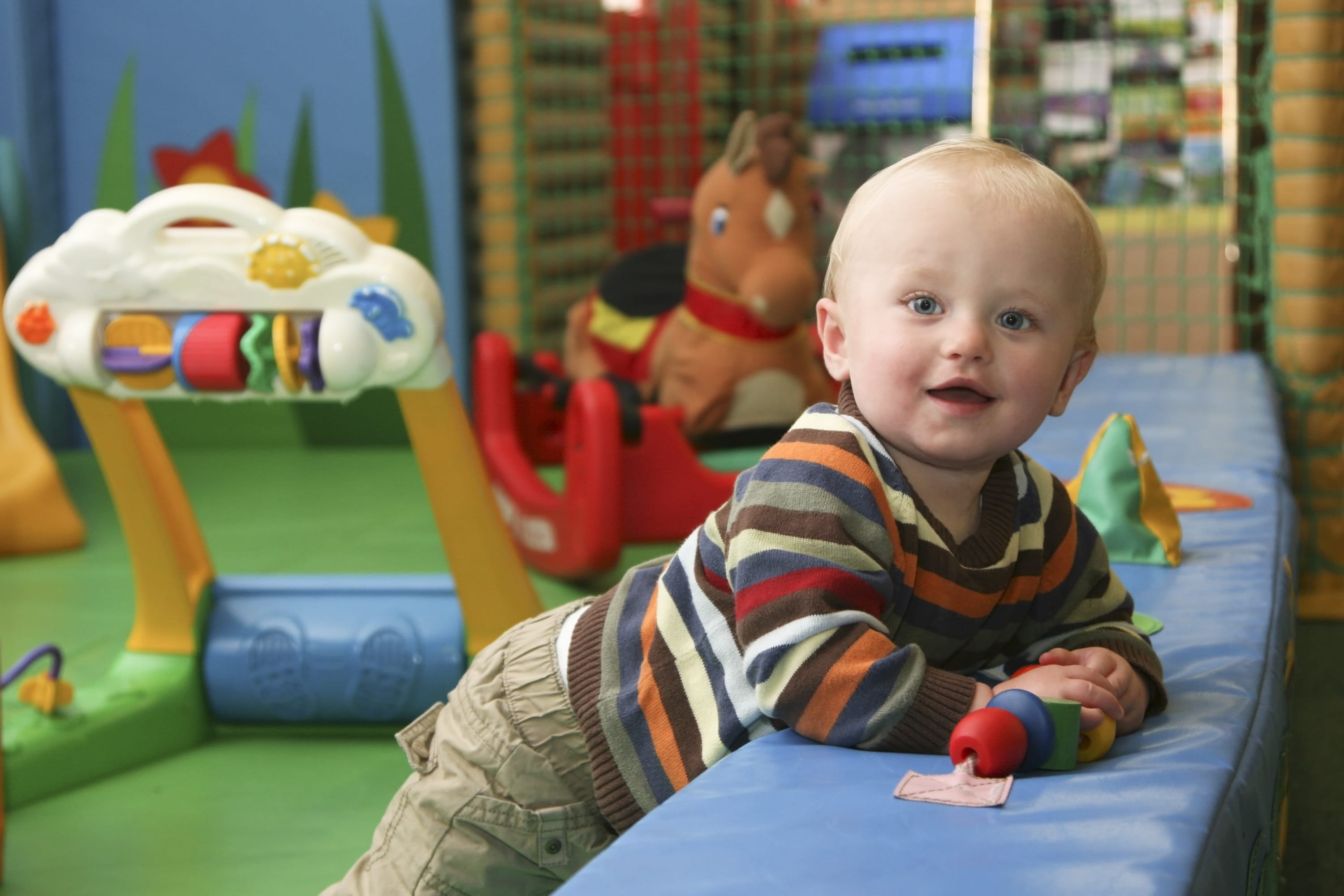It’s not always realistic, or even best, for a mother to be at home with her child–as discussed in The Impact of Working Mothers on Child Development. Here are critical points to consider when choosing childcare, based on empirical research.
Research on the Impact of Substitute Childcare
Longitudinal studies of the association between child academic and behavioral functioning and type and frequency of childcare when they were younger finds that both quality and quantity of childcare is associated with a child’s later behavior and achievement. For example, when the sample studied in the NICHD longitudinal study referenced earlier is evaluated a decade after leaving childcare,1 the researchers found that childcare quality was associated with improved cognitive and behavioral functioning at age 15, with escalating positive effects at higher levels of childcare quality. Similarly, in that study, higher quality care predicted higher cognitive academic achievement (e.g. better vocabularies) at age 4½, as well as during elementary school.
At 4½ years of age, the number of hours in childcare was associated with higher levels of externalizing behaviors such as non-compliance and aggression. The more hours spent in childcare, the greater the likelihood of difficult behavior. Similarly, more hours of non-relative care in the first 4½ years of a child’s life predicted greater risk-taking and impulsivity at age 15.
In a fascinating series of studies,2 researchers found that childcare quality is related to a child’s cortisol levels (a hormone released by the adrenal gland in response to stress). When children receive high-quality childcare, characterized by high levels of emotional support and cognitive stimulation, they are less likely to have increased cortisol levels over the course of the day. Such children showed cortisol levels that were more similar to children who spend their day in the less stressful environment of their own homes.
Guidelines for Evaluating Quality of Childcare

Given the enduring impact the quality of childcare has on child adjustment, it is important for parents to understand what researchers have determined are the core characteristics that define a high-quality program. The NICHD research team developed the following set of nine caregiver behaviors that can guide a parent who is observing caregivers on a typical day in their program:3
If parents are trying to assess a particular program, they should pick out a child in the program who reminds them of their own child and in half-minute intervals observe whether the caregiver:
- responds to the child’s vocalizations;
- reads aloud to the child;
- asks the child a question;
- praises or speaks affectionately to the child;
- teaches the child;
- directs other positive talk to the child;
- has close physical contact with the child;
- is occupied (as opposed to doing nothing), or
- is occupied actively with the child as opposed to watching television.
While all nine of these behaviors were found to be associated with quality of care, the most important was the kind of verbal interaction used by the caregiver. Those who asked questions, praised, taught and, in general, created a warm, enveloping atmosphere by interacting with the child as an individual rather than only with the group and by talking to the child in positive ways contributed to the high level of quality that later predicted more positive cognitive and behavioral outcomes for these children a decade later. Other important caregiver characteristics include a disciplinary style that is characterized by offering children choices and gentle suggestions rather than harsh and punitive ultimatums.4
In addition to the quality of caretaker-child interactions, the characteristics of the physical space of the childcare environment has also been found to be relevant. Researchers have found that having at least twenty-five square feet per child is important. Day care settings that have less space are more likely to have children who are aggressive and less intellectually stimulated.5 Since orderly and predictable environments are so important for children, it is not surprising that researchers have documented the importance of settings that allow children privacy and separate space for quiet and loud play.6
Having a wide variety of age-appropriate play materials has been found to maximize the intellectual challenges in daycare settings.7 When materials are limited in quantity and variety, children have been found to fight more and to show less progress in language and social development.
Another important characteristic of daycare is the balance between structure and free play. Programs that provide all structure with no time for unstructured play have been found to result in defiant, stressed and unhappy children. In contrast, programs that completely lack structure result in children with lower levels of social skills. Researchers therefore conclude that the ideal is a balance between adult-initiated group work that is educational in nature and free play that is directed by the child, yet includes activities that promote exploration, thinking and social interaction.8
The opportunity to play with even one other child on a regular basis is associated with more gains in both social and cognitive areas. This finding argues for the benefit of giving young children the opportunity to have repeated play sessions with the same group of children. The staff-child ratio is an important component determining the optimal size of a childcare center. Research finds that in the care of infants, the staff-infant ratio should be one to one. The sensitivity of staff to the infant’s needs often deteriorates when the ratio goes to one staff member for two or more infants. Obviously, as children get older such intensive ratios are no longer essential. In one study, when the ratio for toddlers improved from 8:1 to 6:1, teachers relied less on negative discipline and became more responsive to the toddler’s needs.9
 Here, a follow-up note from Dr. Pelcovitz, further emphasizing the vital importance of quality substitute childcare.
Here, a follow-up note from Dr. Pelcovitz, further emphasizing the vital importance of quality substitute childcare.
This has been reprinted from the Klal Perspectives Journal with edits. Klal Perspectives is an electronic journal dedicated to addressing the unique challenges facing today’s Orthodox communities. Each issue consists of a symposium in which a diverse group of rabbinic and lay leaders share their different perspectives on a given topic.
Footnotes:
1. Vandell, D., Belsky, J., Burchinal, M., Steinberg, L., Vandergrift, N. (2010) Do effects of early childcare extend to age 15 years? Results from the NICHD study of early childcare and youth development.Child Development, 81(3), 737-756.↩
2. Tout, K, , De Haan, M., Kipp-Campbell, E. & Gunnar, M. (1998) Social behavior correlates of adrenocortical activity in daycare: Gender differences and time of day effects. Child Development: 69:1247-1262.↩
3. The NICHD Early Childcare Research Network (2005) Childcare and child development: Results from the NICHD study of early childcare and youth development.; page 81, New York, NY, Guilford Press↩
4. Clarke-Stewart, A. &Allhusen, V. (2005) What We Know About Childcare , Cambridge, MA, Harvard University Press,.↩
5. Maxwell, L. (1996) Multiple effects of home and day care crowding.Environment and Behavior 28:494- 511.↩
6. Laike, T. (1997) The impact of daycare environments on children’s mood and behavior. Scandinavian Journal of Psychology 38:209-218.↩
7. Clarke-Stewart, A. & Allhusen, V. (2005) What We Know About Childcare p. 113-114, Cambridge, MA, Harvard University Press.↩
8. Stipek, D., Feiler, R. Daniels, D. & Milburn, S. (1995) Effects of differential instructional approaches on young children’s achievement and motivation. Child Development 66L209-223.↩
9. Howes, C. (1996) The Florida Childcare Improvement Study< New York: Families and Work Institute.↩
David Pelcovitz, Ph.D. holds the Gwendolyn and Joseph Straus Chair in Psychology and Jewish Education at Yeshiva University’s Azrieli Graduate School of Jewish Education.
The words of this author reflect his/her own opinions and do not necessarily represent the official position of the Orthodox Union.
